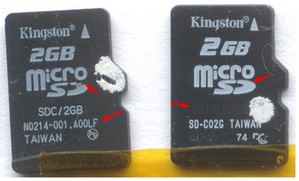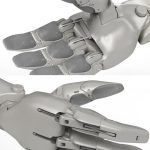Take a memo. If you’re in the memory card business, or indeed any tech biz, try not to annoy Bunnie Huang. If you know what’s good for you. His blog post exposing the seamier underside of the fake memory card business is riveting, if super geek, reading. Not only does the dude, strip down, disassemble and minutely examine the culprits, but he actually goes down the markets to do some detailed research on who’s supplying what to whom.
Apparently fake memory cards are usually built using the genuine production line after everyone goes home at night. It’s called the ‘ghost shift’. It’s fabulous reading.
Who’d have thought that Kingston is just a repackager of basic Toshiba/Samsung chipsets? And they fit an ARM processor into a microSD card? No way! Way?
One vendor in particular interested me; it was literally a mom, pop and one young child sitting in a small stall of the mobile phone market, and they were busily slapping dozens of non-Kingston marked cards into Kingston retail packaging. They had no desire to sell to me, but I was persistent; this card interested me in particular because it also had the broken “D” logo but no Kingston marking.
Very low serial numbers, like very low MAC ID addresses, are a hallmark of the “ghost shift”, i.e. the shift that happens very late at night when a rouge worker enters the factory and runs the production machine off the books. Significantly, ghost shifts are often run using marginal material that would normally be disposed of but were intercepted on the way to the grinder.




